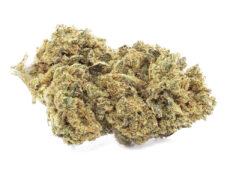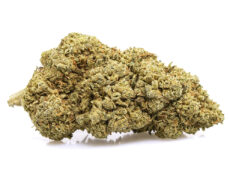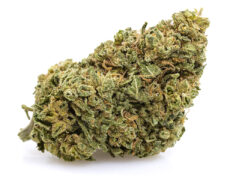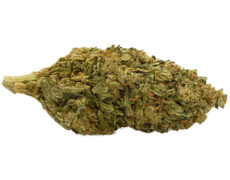Modified on: 19/04/2024
DISCOVERED THE ORIGINS OF HEMP, WHICH WAS CULTIVATED AS EARLY AS TWELVE THOUSAND YEARS AGO FOR MEDICINAL PURPOSES
A new study suggests that the first cultivation of hemp would have originated in eastern Asia more than twelve thousand years ago.
But before we find out where cannabis originated, let’s take a look at the history of this exceptional plant.
-
 SMALL & BIG
SMALL & BIGBUBBLEGUM
Indoor | CBD – CBDA <22%
Starting from:EASTER SALE -10%
1,25CHF1,10CHF/gGrams3 5 10 20 50 100 -



DO SI DOS
Starting from: 2,00CHF/gIndoor | CBD – CBDA < 19%
Grams3 5 10 20 50 100 -



ROYAL GG#4
Starting from: 2,30CHF/gIndoor | CBD – CBDA < 40%
Grams3 5 10 20 50 100 -



GORILLA GLUE
Starting from: 2,90CHF/gIndoor | CBD – CBDA < 20%
Grams3 5 10 20 50 100
Hemp (Cannabis sativa, L. 1785) has been known to man for its versatility and therapeutic effects since the dawn of time.
There is evidence of man’s use of cannabis as early as the Neolithic period (the Stone Age, from 10,000 BC to 3,500 BC) by discovering fossilized seeds.
It is exciting and indicative to discover that the oldest human artefact is a piece of hemp cloth dating back to 8,000 B.C., the first evidence of cannabis cultivation in China for textiles before the advent of silk and cotton.
In Arab countries, the resin of the hemp plant was consumed for centuries for its mind-altering properties, particularly by the Hashashin in Syria.
The term Hashin from Arabic would mean ‘hashish addict’ or ‘hashish smoker’. Cannabis was also used by the Assyrians, who learned of its psychoactive properties from the Aryans, and thanks to them, it was also made known and used by the Scythians and Thracians. They began using it during their religious rituals.


Cannabis arrives in the West
Several studies have shown that by 500 AD, hemp reached the West, almost certainly through the movements of nomadic tribes. It became an essential crop for the peoples of North America, especially in the early 1600s: settlers produced hemp for various applications and uses, such as clothing, canvas for ships’ sails, and ropes and cords, for both nautical and domestic use.
Oil was also extracted from the plant using presses for crushing oil seeds, such as hemp and flax.
The use of hemp fibers for making sails and ropes reached its peak in Europe with the expansion of the Maritime Republics. As a result, a real business was created around the plant. For example, Italy quickly became the world’s second-largest producer of hemp, with almost 1000 hectares of cultivated land, and the first supplier to the British Navy.
The most productive areas of Italy were Ferrara and Bologna, but hemp was also cultivated in Liguria, Tuscany, Umbria, Salerno, Naples, and Sicily.
Origin of cannabis: studies
A 2016 study had linked the first findings of cannabis cultivation to Japan and China.
Many botanists now argue that the plant was ‘domesticated’ from the easternmost regions of Central Asia, where wild varieties are still widespread today.
Evidence has pointed to three key regions: Central Asia — present-day Kazakhstan, Mongolia, and the Russian Far East could all be potential points of origin for the plant; India — Cannabis was discovered growing wild in the mountains of the south-western Himalayas, and it was considered reasonable to assume that the plant originated in north-western India, including the Punjab and Kashmir regions.
Finally, recent studies have focused on Tibet.
Tibet: the true cradle of cannabis
It has recently been demonstrated that cannabis originated on the Tibetan plateau.
Although all the above theories have a valid basis, it has recently been proven that cannabis originated on the Tibetan plateau.


However, the research team did not have an easy time with it. Historical documents’ lack of fossil prints (i.e., impressions of the leaves being studied on other objects) made the study more complicated than expected.
To overcome this lack, scientists turned to the fossil pollen of the Cannabaceae.
But the truth is hard to find. The researchers were confronted with the extreme similarity between Cannabis pollen and another plant in the Cannabaceae family, Humulus lupulus (L., 1753), the common hop.
To circumvent the obstacle caused by identification problems, the researchers used a statistical technique based on ‘ecological approximations’ to differentiate between the different plant pollens.
The data confirm the north-eastern Tibetan plateau as the center of origin of cannabis, in the vicinity of Lake Qinghai at about 3700 meters above sea level.
Read also: Prohibition is ineffective: this is the study of the University of Messina
Conclusion
The research team believes that the plant spread westwards, reaching Russia and Europe 6 million years ago, and eastwards, reaching eastern China 1.2 million years ago.
Finally, studies on fossil pollen have also revealed where hemp grows best: the steppe is the habitat where the plant thrives, as wide-open spaces characterize it without trees favour better growth.
Meanwhile, you can visit our JustBob online shop to find our best products, such as CBD oil and CBD cannabis.







